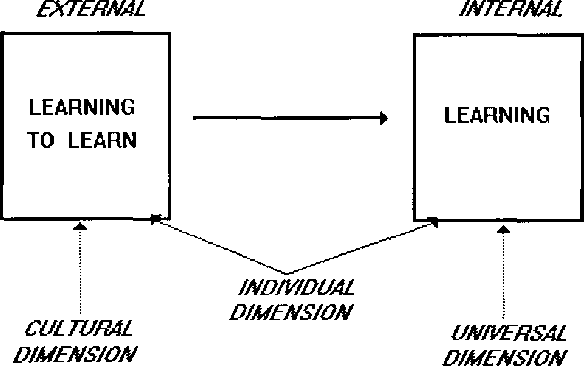external, learning to Ieam one. What it means is that in order to make self-directed learning
an attainable goal we have to provide the learner with the necessary conditions for self-
direction. It is evident, that these conditions will take into account the context, that is the
culture the learner is member of. In other words, it is the learning to Ieam scheme which
needs to be contextualised to match the learning environment.
Far from being culturally biased, autonomy as an educational aim is a social
and cognitive imperative, a defining characteristic of the learning process.
Its attainment may be either facilitated or Obstructedby the arrangements
for formal learning, which means that the forms of learner training appropriate
to given cultural contexts will vary (my italics, Riley; 1996b,22-23)

Fig. 4.6. Influence of different dimensions on a self-direction scheme.
As I see it, this is the best way to consider self-direction and autonomy within the
domains of authenticity.
4.4 REFORMULATION
As the reader will have noticed, in my attempt to make sense I needed to be critical,
productive and context-aware. In the first part of this chapter I re-read a key piece of the
literature of self-directed research. The process undergone in this second reading was
different from the first time I read it. The second time, I considered it from a critical point of
view. I was certainly more aware of what I was reading. I did not take so many things for
115
More intriguing information
1. The name is absent2. Wettbewerbs- und Industriepolitik - EU-Integration als Dritter Weg?
3. Industrial Employment Growth in Spanish Regions - the Role Played by Size, Innovation, and Spatial Aspects
4. An institutional analysis of sasi laut in Maluku, Indonesia
5. Fighting windmills? EU industrial interests and global climate negotiations
6. Foreign direct investment in the Indian telecommunications sector
7. The name is absent
8. The name is absent
9. The name is absent
10. The name is absent